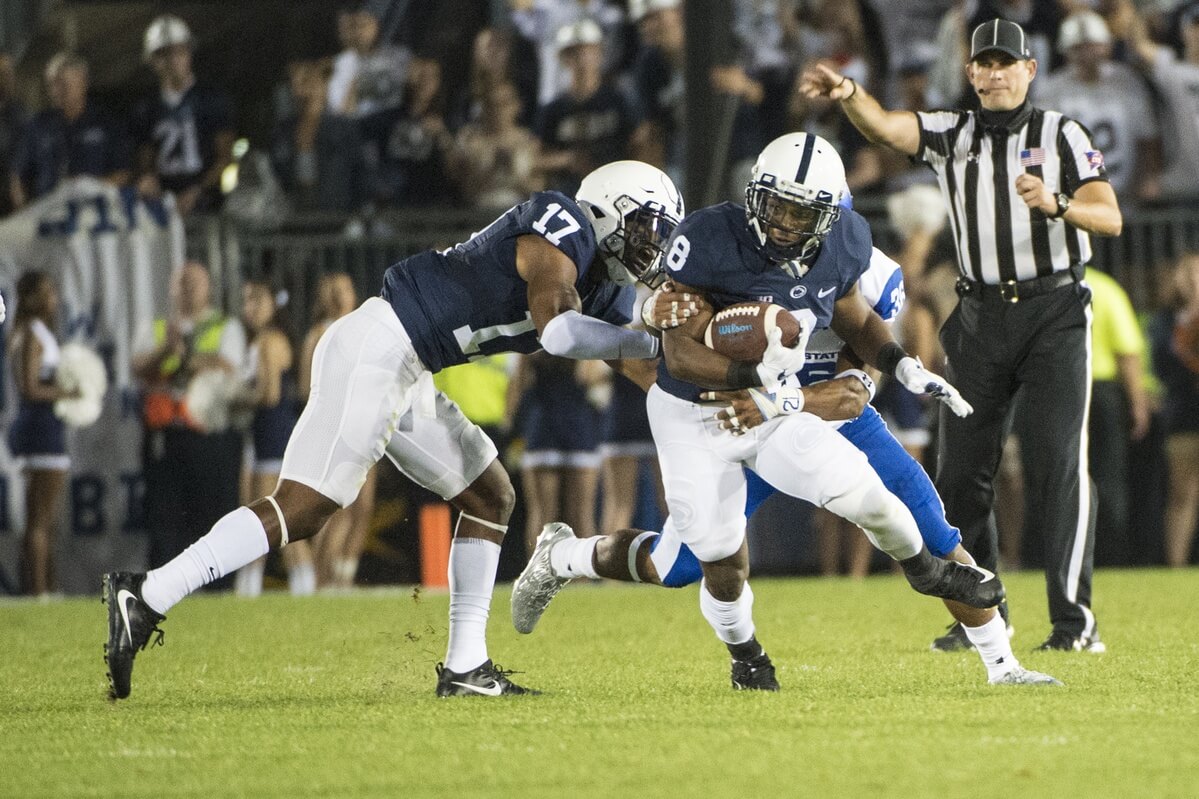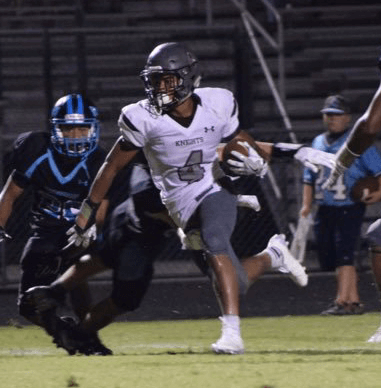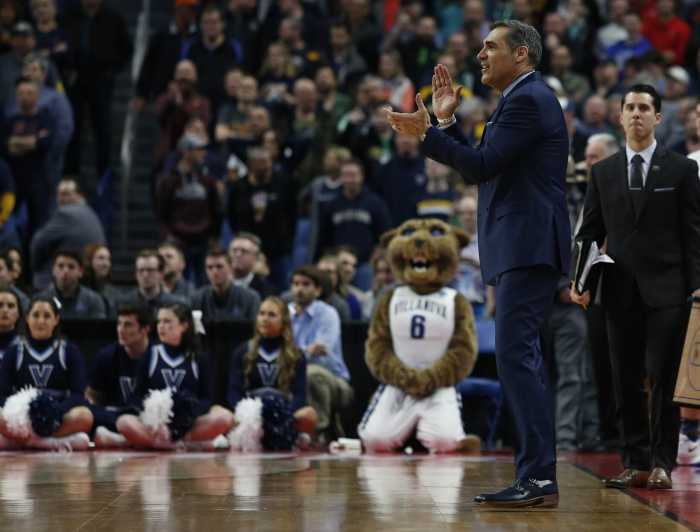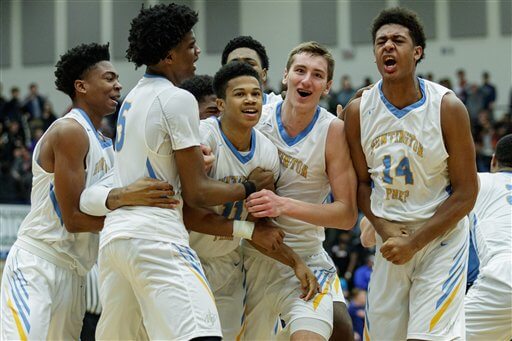We knew things weren’t going to go overly well for Georgia State when they went into Beaver Stadium this past weekend. We knew that the Panthers were overmatched on both sides of the ball, and hadn’t had much success since moving to the FBS level. I don’t think any of us really knew how lopsided this game would actually feel. The score left a gaping hole between these two teams. The score wasn’t indicative of how this game turned out. It was a contest in which, had Penn State played its starters the length of the game, could have been a bloodbath.Put simply, it wasn’t ever close. And when you get games such as this, it’s hard to delve into X’s and O’s. You could say the Nittany Lions were better, point blank, and you’d be correct in that assessment. But that’s why we get paid the big bucks here. We don’t take games, especially one of this natures, on face value. It’d be a cop out. No, we here at Philly Sports Network like to dig a little deeper and find the true meaning behind these kind of games. Because we focus our energies on deeper values, here’s four takeaways I saw from the 56-0 victory over Georgia State.
Penn State’s Defense Is Extremely Deep…
The beauty of games like this, expelling the monotony of dredging through the second half of preseason type plays, is that Coach James Franklin gets a chance to look at his younger players buried on the depth chart. And what we’ve learned from this game, in which the two’s and three’s got a chance to showcase themselves, is that the Penn State defense, especially in the underclassmen, is extremely deep. 34 different players made a tackle for Penn State. That’s an average of a new player recording a tackle every 1.7 minutes of play. 17 of those players are redshirt sophomore or younger. Half of the defensive stat sheet will be with the team for at least two more seasons. That doesn’t account for some of the highly touted freshman that are redshirting this season to get another season of eligibility.
You can see this depth on full display in multiple fronts. We talked about it earlier this season, but the defensive secondary was a concern after John Reid went down with an injury in spring ball. He won’t play this season. Up stepped Amani Oruwariye. He came away with an interception against Akron in week one. We saw Oruwariye limp off the field at the end of the Pitt game last week. Penn state felt confident enough in the secondary depth to sit Oruwariye this past weekend against Georgia State. Grant Haley and Christian Campbell assumed the starting roles, taking on a decent receiving core led by Penny Hart. While Hart finished the game with seven receptions and 56 yards, he was largely held in check most of the day. The Nittany Lions eventually came away with three interceptions, including one from Haley, as well as one from true freshman cornerback Tariq Castro-Fields.
I was wildly impressed with the presence of the defensive line, as well. In particular, two players stood out in the trenches for me: sophomore defensive ends Shaka Toney and Daniel Joseph. The pair did a tremendous job getting up the field when given the opportunity and closed in on both Brandon Manning and Taz Bateman all evening. Toney ended the night with three tackles, half a sack and a forced fumble. Joseph entered the game for the first time this season and was productive as well, recording four tackles, 1.5 sacks and also stripping the football once.
This team has the ability to run three deep at nearly every defensive position. I’d expect to see a two-fold defensive depth chart as Big Ten play looms, but don’t be surprised to see nearly as many players enter the game on defense as did this past weekend any given Saturday. James Franklin feels just as confident in his young guns as he does in his upperclassmen. This defense could be scary for a long time.
…But Losing Torrence Brown Will Hurt
One of the great things about this blowout win, aside from the blowout win, is that most of the team walked out of Beaver Stadium under their power. Except Torrence Brown. Brown was carted off the field midway through the game after taking a low block to the knee from running back Kyler Neal. Before we go any further, yes, it was a clean block. He was replaced by Ryan Bucholz for the remainder of the game. Bucholz played well in his increased role, but missing Brown for any extended period of time is a loss to this talented front four. Penn State fans were hoping for big things out of Brown this season after playing primarily as the third or fourth defensive end in his first two seasons at the school. He has eight tackles through the first two plus games this season. James Franklin said he expects Brown to be readily available for the game against Iowa this weekend, but after taking a second look at the shot that Brown took, I don’t know at what capacity he’ll be expected to play on just six days’ rest. The good news is, if the injury were severe enough to be season ending, Franklin would have broken his usual silence and made an announcement either post game in in the following hours. Since Franklin made light of the injury, saying very little, I’d believe Brown will sit out much of this weekend on the road and will be back to action next week against Indiana.
Saquon Barkley Is The Best Receiver On The Team
Earlier this season, I wrote a piece on how Penn State could replace departing Chris Godwin. I said they could use Mike Gesicki more, get DeAndre Thompkins involved deep down field, and use Juwan Johnson’s size underneath and over the middle. But forget Gesicki, Thompkins and Johnson. Well, don’t forget them. They’re all vital pieces to Penn State’s success moving forward. But push them to the side because running back Saquon Barkley, the wonder boy, can add top receiver to his extensive list of talents.
I know Barkley’s stats were inflated this weekend because of the big, 85-yard scamper, but we’ll get to that reception in a second, because it’s just as important. In totality, Barkley hauled in four passes for 142 yards and one score. So let’s get this out of the way first. Take the long run out. That’s still three catches for 57 yards, an average of 19 yards per reception. That still would have been second best on the team this weekend, behind Saeed Blacknall’s 21.3 yards per catch. He still outpaced Gesicki, Hamilton and Thompkins.
Now, let’s get back to that long reception because it is drastically important. If you go back and watch that play, you’ll notice how quickly the pocket collapsed around Trace McSorley. McSorley did a good job of stepping up and creating additional time, but Barkley was the reason that play happened in the first place. He cut his route short out of the backfield and came back to the ball giving McSorley a quick, short option to fire to. Of course, most backs may get the first down on the play where a majority of the back seven were going in the opposite direction, but what Barkley did after the catch was magnificent. He picked up the first down, cut up the field, toed the line while evading two Panther defenders and turned the play into an 85-yard score.
Looking at Barkley as a route runner in general, it amazes me how crisp his routes are out of the backfield. He gets himself in a position to often times chip a defender in the backfield before getting into his route. He cuts wells, creating separation from the poor linebackers that are given the daunting task to cover him.
Barkley already has 11 receptions through the first three games of the season, putting him on pace for 44 over the course of the season. He’s picked up 241 yards and two touchdowns off of these grabs. Finally, with his career high 142 receiving yards, Barkley now has 804 yards in his Penn State career, breaking the record of 799 set by Tony Hunt from 2003-2006. Even if Barkley decides his best avenue is to declare for the NFL Draft at the end of this season, barring injury, he’ll still have at least nine games left in his collegiate career, with the potential to play an additional three more. He should easily surpass the 1000 yard mark, making him just the 21st player in Penn State history and the first running back to do so.
Penn State Learned From Last Year
This one is a bit obscure, but it could as a difference maker from last year to this year. Last year, Penn State was beaten by Pittsburgh early in the season, a game that may have forced the hands of the College Football Playoff Committee in keeping the Nittany Lions out of the playoff last season. This year, Penn State learned from its mistakes and took care of business in the non-conference schedule, going 3-0 in non-conference play. Of course, the team played Pitt for the second straight season, and were it not for a new quarterback-running back combo for the Panthers, it may have been a much closer affair. Nate Peterman clearly made a huge difference in 2016.
But this 3-0 start could be the difference between another Rose Bowl appearance and a spot in the College Football Playoff this season. Remember, last season, the team that got in ahead of Penn State was Washington. Washington played Rutgers, Idaho and Portland State in its non-conference docket. This being said, they went 3-0 in non-conference, compared to Penn State’s 2-1. Penn State fans claimed that the strength of schedule, whether Penn State’s was more difficult or Washington’s was a clear path to remaining undefeated going into Pac 12 play, was the difference between the two teams last year. Let’s line up the non-conference opponents from last season, and Kent State may topple Rutgers, but it’s close. Pitt slaughters Idaho. Temple would defeat Portland State. There’s your difference in strength of schedule.
Regardless if Pitt were equally talented this year, or Penn State is better, or an equal number of factors, Penn State did its job by going undefeated in non-conference play. The 3-0 start is the first for the Nittany Lions since 2014 when the team won its first four games before dropping four straight.
Mandatory Credit: Gregory J. Fisher-USA TODAY Sports




























